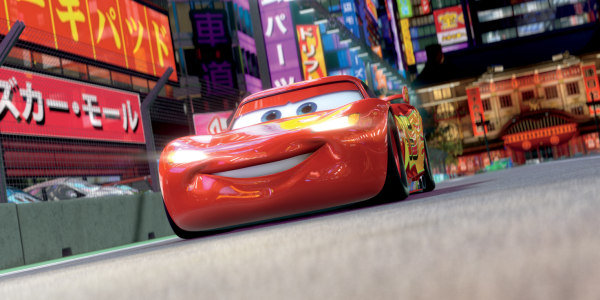“Toy Story” has always been a 3-D film, even if moviegoers never saw it that way.
Computer-generated animation made the 1995 Pixar smash 3-D by design, with virtual cameras moving through a digital space, capturing the mass and dimension of each character and setting. At the time, though, theaters lacked the high-tech projectors required to show it that way, forcing filmmakers to collapse the images back down to two dimensions so the movie could play in multiplexes.
More than a decade later, projection technology has caught up with CG film making, inspiring movie moguls such as Jeffrey Katzenberg, James Cameron, Peter Jackson and Pixar’s John Lasseter to declare 3-D the future of film.
Disney-Pixar, which released “Up” in 3-D earlier this year, is embracing the future and past at once by amping up the 3-D in “Toy Story” and “Toy Story 2” for a limited double-feature run beginning Friday.
“It’s a great 3-D movie because (Pixar) had discovered this ability to move through these spaces in 3-D,” said stereographer Bob Whitehill, who oversaw the updates on both films. “We were just never able to project them in 3-D, and now we can.”
The Oscar-nominated tale of Woody, Buzz Lightyear and their toy box full of friends isn’t the only beloved film getting a 3-D retrofit: Cameron’s company, Lightstorm, reportedly has a 3-D rerelease of “Titanic” in the works. “Star Wars” creator George Lucas has said he’d like to convert all six franchise films into 3-D and his company, Lucasfilm, has worked with a firm developing technology to do that, but a company spokeswoman said no timeline exists for now.
Slideshow 43 photos
Animated films take flight
Converting a live-action film to 3-D is even more challenging, Whitehill said. Artists must duplicate the original film to create a right-eye view, then cut out each element in the scene to sculpt a three-dimensional image. Further depth is created by projecting flat images onto computer-generated geometric forms, so the eye perceives a natural distance between the nose and ears on a face, for example.
Though “Wall-E” and “Ratatouille” have also been tested, Pixar has no plans to rerelease them in 3-D — but all of the company’s future films will come in two-dimensional and three-dimensional versions.
The rerelease of the two “Toy Story” movies serves an additional purpose: It heralds the arrival of “Toy Story 3” in 3-D next summer.
Getting 1995’s Woody and Buzz back to the big screen wasn’t easy. Even though the original movies were made in three dimensions, it took Whitehill and his team of 20 artists nearly 18 months to update the two “Toy Story” films.
The first challenge was technical: Extracting digital files from 15-year-old software. The second was creative, Whitehill said: “How do we want to give the audience a rich experience without eye strain and to capture the heart of these movies?”
Dimensionalized, “Toy Story” shows how far the fall is when Woody tumbles from the bed to the floor and just how cavernous a child’s toy box can be. The aim was to create “a concave experience, one that draws you into the story and into the imagery, instead of a convex experience that pokes at you, Whitehill said.
His team went through the two films shot by shot, digitally adding a “right-eye camera” to each. Then they carefully adjusted the speed of the edits and depth of the images to make each movie easy on the eyes — especially given the length of the two films combined.
“The amount of 3-D people enjoy is somewhat subjective,” Whitehill said. “But a headache is not subjective.”
